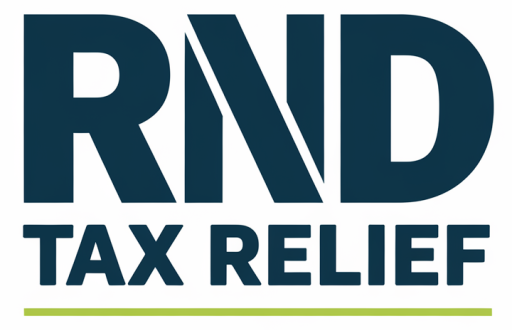Maximise Client Finances Using R&D Tax Credit Relief Strategies
Maximise Client Finances Using R&D Tax Credit Relief Strategies
If you’re helping clients manage their business finances, there’s one powerful tool you might be missing: R&D tax relief. Whether you’re an accountant, consultant, or business advisor, understanding how to use this relief efficiently could make a massive difference to your clients’ bottom line.
Not sure where to start? Don’t worry—we’re breaking it down into simple, everyday language, showing you practical ways to maximise client cash flow through strategic use of R&D tax credits. Let’s explore how this often-overlooked relief can help boost innovation, reduce costs, and free up capital for growth.
What Is R&D Tax Relief, and Why Should You Care?
Put simply, R&D tax relief is a government incentive designed to reward businesses that invest in innovation. If a company is working on new products, services, or processes—or even improving existing ones—it may be eligible to claim back a portion of its development costs.
These are real savings. For SMEs, the relief can mean getting back up to 33p for every £1 spent on qualifying R&D activities. Larger companies also benefit through the RDEC scheme, which provides a separate credit.
Why does this matter for your clients? Because reclaiming thousands—or even hundreds of thousands—in R&D tax credits can dramatically improve cash flow. That money can be used to hire staff, invest in new tools, or develop further projects. It’s a cash injection that doesn’t involve loans or investors.
Is Your Client Eligible?
You might be surprised by how many businesses qualify for R&D tax credits. Many companies miss out simply because they assume they’re not ‘innovative enough.’ But in reality, qualifying research and development appears in all kinds of industries—not just tech or science labs.
Typical areas where eligibility might apply:
- Creating a new product or service from scratch
- Improving a manufacturing process to make it more efficient
- Developing bespoke software to overcome a business issue
- Solving technical problems no one else has fixed before
Still unsure? Ask: “Is the business working to overcome uncertainty and making advances?” If yes, they could be doing qualifying innovation work.
Cash Flow Planning Using R&D Claims
Claiming R&D tax relief isn’t just about getting money back—it’s a strategic financial tool. With the right planning, you can actually build the expected value of the R&D claim into your client’s future cash flow forecast.
That means instead of treating the claim as a pleasant surprise, you’re integrating it as a planned refund or tax reduction. This can make a huge difference when applying for finance, planning investments, or managing overheads.
Here’s How That Might Look:
- Your client spends £100,000 on R&D over 12 months.
- Your forecast anticipates a £25,000-£33,000 R&D tax credit.
- You build that expected credit into Q1 of the next tax year cash flow.
This gives the client more financial confidence—and helps meet commitments without scrambling for funds.
What About Pre-Revenue Startups?
If you’re working with startups or pre-revenue firms, R&D tax relief becomes even more crucial. These businesses typically have tight budgets but often invest heavily in development. A tax credit could be the difference between stopping a project or continuing to innovate.
In many cases, these credits can be paid directly into the company’s bank account as a cash repayment—offering much-needed liquidity.
Top Tip:
For startups, pair your R&D claim strategy with support from government grants or equity funding. This combined approach builds resilience and empowers growth.
Timely Claims: Plan Ahead
Timing is everything when it comes to R&D tax relief. You can claim up to two years after the end of the accounting period in which the R&D was carried out, according to HMRC.
But waiting that long isn’t always wise. The sooner you identify qualifying activities, the sooner you can align claims with financial planning. In fact, some accountants use R&D forecasting software to estimate expected credits well before year-end.
Practical Tools for Financial Planning
Looking to help clients visualise how R&D claims enhance their finances? Try this:
- Add R&D relief into profit forecasts alongside projected sales and expenses.
- Use rolling forecasts where credit value is adjusted based on current R&D spending.
- Create ‘what if’ models to show the impact of larger or smaller R&D investments.
These insights make it easier for owners and boards to make decisions backed by clear financial data. And they help justify continued investment in innovation.
Let’s Talk Real Impact
Here’s a quick example. A manufacturing firm was spending heavily on new equipment and process optimisation. Their accountant flagged that much of the work involved technical uncertainty—challenging the team to find new ways to boost efficiency.
The result? A successful R&D claim brought back £65,000 in a single year. That reward was used to train new hires and fund the next phase of development. Without the claim, they might have halted progress due to budget constraints.
That’s the power of proactive tax planning.
Helping Clients Help Themselves
Clients don’t always come knocking and asking for help with R&D. So if you’re a trusted advisor, it’s worth starting the conversation. Here’s how:
- Ask clients what challenges they’ve faced developing products this year.
- Find out where they’ve invested in new tools, processes, or skilled staff.
- Talk about any unsuccessful attempts—they might still qualify for relief.
Position yourself as not just a number cruncher but a partner in growth. By adding R&D tax planning to your toolkit, you’ll stand out—and deliver real value.
Your Next Step? Act Now
If you’re not already incorporating Research and Development Tax Credits into your client advisory work, now is the time to start.
Begin by reviewing the last two accounting periods. Are clients missing opportunities to reclaim tax or receive cash back? The longer you wait, the closer you get to losing out as the two-year window closes.
You don’t have to be an R&D expert to make a difference—but knowing when to bring in specialists can be crucial.
Final Thoughts
Planning finances around R&D tax credits isn’t just good practice—it’s smart strategy. It strengthens cash flow, fuels growth, and shows clients you’re thinking one step ahead. In today’s competitive environment, that kind of partnership matters more than ever.
Still have questions? Take a closer look at which activities qualify, how much your clients could claim, and expert help on making your next move by visiting the R&D Tax Relief site.
Remember: Strategic use of R&D tax relief can be the secret weapon that fuels client innovation and keeps their finances on track. Don’t leave money on the table—help your clients claim what’s rightfully theirs.






